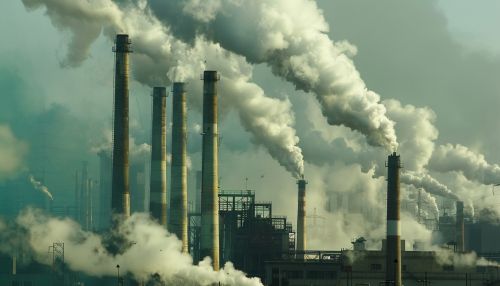Environmental Hazard
Introduction
Environmental hazards are elements within the environment that can potentially cause harm to humans or the ecosystem. They can be natural, such as volcanoes or earthquakes, or they can be man-made, such as pollution or nuclear accidents. Understanding these hazards and how they interact with the environment is crucial for the development of strategies to mitigate their impact.


Types of Environmental Hazards
Environmental hazards can be broadly classified into five categories: physical, chemical, biological, cultural/technological, and psychological.
Physical Hazards
Physical hazards are natural disasters that can cause harm to humans and the environment. These include tsunamis, earthquakes, volcanic eruptions, floods, and droughts. These events can cause widespread destruction and loss of life, and can also lead to secondary hazards such as landslides and fires.
Chemical Hazards
Chemical hazards refer to substances that can cause harm to humans or the environment. This can include industrial waste, pesticides, heavy metals, and radiation. These substances can contaminate air, water, and soil, and can have long-term health effects on humans and wildlife.
Biological Hazards
Biological hazards are living organisms or substances produced by living organisms that can cause harm to humans or the environment. This can include pathogens, invasive species, and biological toxins. These hazards can cause disease in humans and animals, and can disrupt ecosystems.
Cultural/Technological Hazards
Cultural/technological hazards are man-made hazards that result from human activities. This can include pollution, nuclear accidents, and deforestation. These hazards can have significant impacts on the environment and can also pose risks to human health.
Psychological Hazards
Psychological hazards are aspects of the environment that can cause stress or anxiety. This can include noise pollution, overcrowding, and the fear of natural disasters or man-made accidents. These hazards can have significant impacts on mental health and wellbeing.
Impact of Environmental Hazards
Environmental hazards can have significant impacts on both humans and the environment. These impacts can be immediate, such as injury or death caused by a natural disaster, or they can be long-term, such as the health effects of exposure to radiation or chemical pollutants.
Impact on Humans
The impact of environmental hazards on humans can be physical, psychological, or social. Physical impacts can include injury, illness, or death. Psychological impacts can include stress, anxiety, and trauma. Social impacts can include displacement, loss of livelihood, and societal disruption.
Impact on the Environment
The impact of environmental hazards on the environment can be significant. This can include damage to ecosystems, loss of biodiversity, and changes to the landscape. In some cases, these impacts can be irreversible.
Mitigation of Environmental Hazards
Mitigation of environmental hazards involves strategies to reduce the risk and impact of these hazards. This can include prevention strategies, such as reducing pollution or managing invasive species, and response strategies, such as disaster preparedness and emergency response.
Prevention Strategies
Prevention strategies aim to reduce the risk of environmental hazards. This can include reducing pollution, managing invasive species, and implementing building codes to reduce the risk of damage from natural disasters.
Response Strategies
Response strategies aim to reduce the impact of environmental hazards once they have occurred. This can include disaster preparedness, emergency response, and recovery efforts.
Conclusion
Environmental hazards pose significant risks to humans and the environment. Understanding these hazards and implementing strategies to mitigate their impact is crucial for the protection of human health and the environment.
